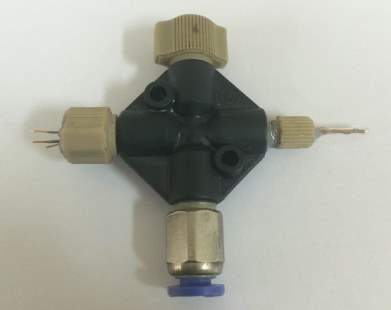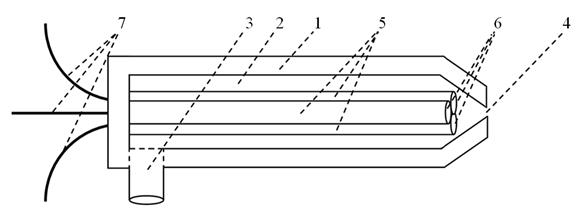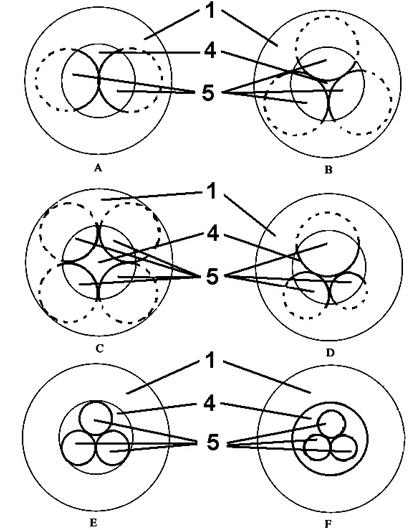Never miss an update from Universidad de Alicante
Create your free account to connect with Universidad de Alicante and thousands of other innovative organizations and professionals worldwide

New and innovative aspects
This multicapillary nebulizer has the following advantages over current multiple nebulizer devices of the state of the art:
Main advantages of its use
This multicapillary nebulizer allows simultaneous mixing and nebulization of two or more liquids, miscible or not.
This device differs from other conventional nebulizers or multiple nebulizers, by the large number of independent liquid input capillaries with a single exit orifice of the aerosol.
Specifications
In order to overcome the limitations described above, a novel multicapillary pneumatic nebulizer has been developed which allows the simultaneous nebulization of different liquids, miscible or immiscible between them, by means of several independent liquid input capillaries with a single aerosol outlet orifice.
As shown in Figure 1, the nebulizer outer body (1) comprises a pressure chamber (2) for the flow of a nebulizing gas and an inlet tube (3) of said gas and an outlet orifice (4) thereof, open to the outside. Within the pressure chamber a plurality of liquid input capillaries (5) is housed, said capillaries preferably arranged in parallel, whose outputs (6) are commonly positioned in the area of the aerosol outlet orifice and whose inputs are connected to liquid feeding tubes (7), so that each liquid input capillary is connected to a separate liquid feeding tube. Liquid flows to be nebulized are aspirated or pumped through the various feeding tubes and through the liquid input capillaries of the nebulizer, located within the pressure chamber. At the exit of the liquid input capillaries, the liquid flows interact with the gas flow at high or low speed, and at high or low pressure in the pressure chamber; liquid and gas flows mix together, forming the aerosol which is pushed towards the outlet orifice of nebulizer expelling the nebulized product to the outside.

Figure 1. The multicapillary nebulizer comprises: (1) nebulizer outer body; (2) pressure chamber; (3) gas inlet; (4) output orifice of the aerosol; (5) liquid input capillaries (sample, calibration standards, reagents, solvents, etc.); (6) exit orifices of the liquid input capillaries; (7) liquid feeding tubes.
The developed device can adopt several embodiments, providing a high versatility to adapt to different applications. For example, Figure 2 shows several embodiments, without limiting them, using different quantities and geometries of the liquid input capillaries.

Figure 2. Some of the possible embodiments of the multicapillary nebulizer (front view) showing a different quantity (2, 3 or 4) and/or a different geometry (symmetry and diameter) of the liquid input capillaries and their location and dimension relative to the exit orifice of the aerosol, wherein: (1) nebulizer outer body (4) exit orifice of the aerosol and (5) liquid input capillaries.
Applications
The present invention falls within the field of liquid nebulization technologies. Specifically, this device allows mixing and nebulizing two or more liquids, which makes it particularly suitable for sample preparation and liquid sample introduction in spectrometric techniques in the field of chemical analysis.
The multicapillary nebulizer can be used for the following:
Intellectual property status
The present invention is protected by patent rights:
Current development status
A laboratory-constructed prototype has been developed that it is available for any demonstration (Figure 3).
Desired business relationship
Companies interested in acquiring this invention for commercial exploitation by:
Ahead of the current Coronavirus outbreak, Innoget is fully committed to contributing to mobilizing scientific and expert communities to find a real solution to the Covid-19 pandemic. Therefore, we're supporting worldwide calls and programs that could help in any aspects of the coronavirus crisis.
Is your organization promoting or looking for innovation or research initiatives to mitigate the Covid-19 outbreak? Email us at covid19@innoget.com to list them.
Channeled through Innoget's online open innovation network, initiatives in the health, virology, medicine, or novel technologies applied to human health, among others, are listed and disseminated to Innoget members -ranging from hospitals, research institutes, scientists, businesses, and public administrations- and innovation partners worldwide.
Create your free account to connect with Universidad de Alicante and thousands of other innovative organizations and professionals worldwide
Send a request for information
to Universidad de Alicante
Technology Offers on Innoget are directly posted
and managed by its members as well as evaluation of requests for information. Innoget is the trusted open innovation and science network aimed at directly connect industry needs with professionals online.
Need help requesting additional information or have questions regarding this Technology Offer?
Contact Innoget support